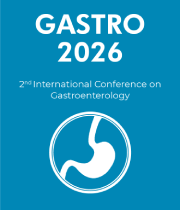Chromoendoscopy
Chromoendoscopy Is A Medical Imaging Technique That Combines Traditional Endoscopy With The Use Of Dyes To Identify And Examine The Inner Lining Of The Gastrointestinal Tract. It Is Primarily Used To Diagnose And Treat Gastrointestinal Diseases Such As Gastric Cancer, Barrett’s Esophagus, And Ulcerative Colitis. The Colored Dyes Used In Chromoendoscopy Are Designed To Highlight Abnormal Areas Of The Gastrointestinal Lining And Make Them Easier To Identify During An Endoscopic Examination. In A Typical Chromoendoscopy Examination, A Doctor Uses A Flexible Endoscope With A Camera To Look Inside The Patient’s Gastrointestinal Tract. The Endoscope Is Inserted Into The Patient’s Mouth, And Then The Doctor Can Move It To The Stomach And Intestines. During The Procedure, A Special Dye Is Sprayed Into The Tract To Highlight Any Suspicious Areas. The Dye Is Usually A Mixture Of Acidic And Basic Dyes That Can Create A Variety Of Colors, Such As Red, Orange, Yellow, And Green. The Colors Help The Doctor To Identify Any Abnormal Cells Or Tissues. Chromoendoscopy Has Been Used For More Than 20 Years And Is Considered To Be A Safe And Effective Diagnostic Tool. It Is Especially Useful For Diagnosing Gastrointestinal Cancers, Which Can Be Difficult To Detect With Regular Endoscopy. Additionally, Chromoendoscopy Can Be Used To Assess The Effectiveness Of Treatments For Gastrointestinal Diseases, Such As Ulcerative Colitis. Chromoendoscopy Is A Valuable Medical Imaging Technique That Can Help Diagnose And Treat A Variety Of Gastrointestinal Diseases. It Is Safe And Effective, And It Can Help Doctors To Identify And Treat Abnormalities In The Gastrointestinal Tract.



